Pallet Inverter: How to Rotate Wine Crate Pallets Without Bottle Breakage?
Handling high-value goods always comes with a little bit of fear. I've seen it many times. You have a pallet stacked high with wine crates. Each bottle is a promise of quality and profit. But you need to switch the wooden shipping pallet for a plastic one to meet hygiene standards, or maybe the bottom pallet is broken. The problem is, every manual movement is a risk. A small mistake, a moment of imbalance, and you don't just have broken glass. You have lost product, a safety hazard on the floor, and a cleanup job that stops everything. This is a common headache in logistics, where the value of the product is high and its container is fragile.
A pallet inverter is the solution to rotate wine crate pallets without breakage. It works by securely clamping the entire palletized load from the top and bottom with controlled, adjustable pressure. The machine then smoothly rotates the load 180 degrees. This allows the original pallet to be removed from the top and replaced. The process is fully mechanical, stable, and gentle, eliminating the risks of manual handling and ensuring the wine bottles remain intact.
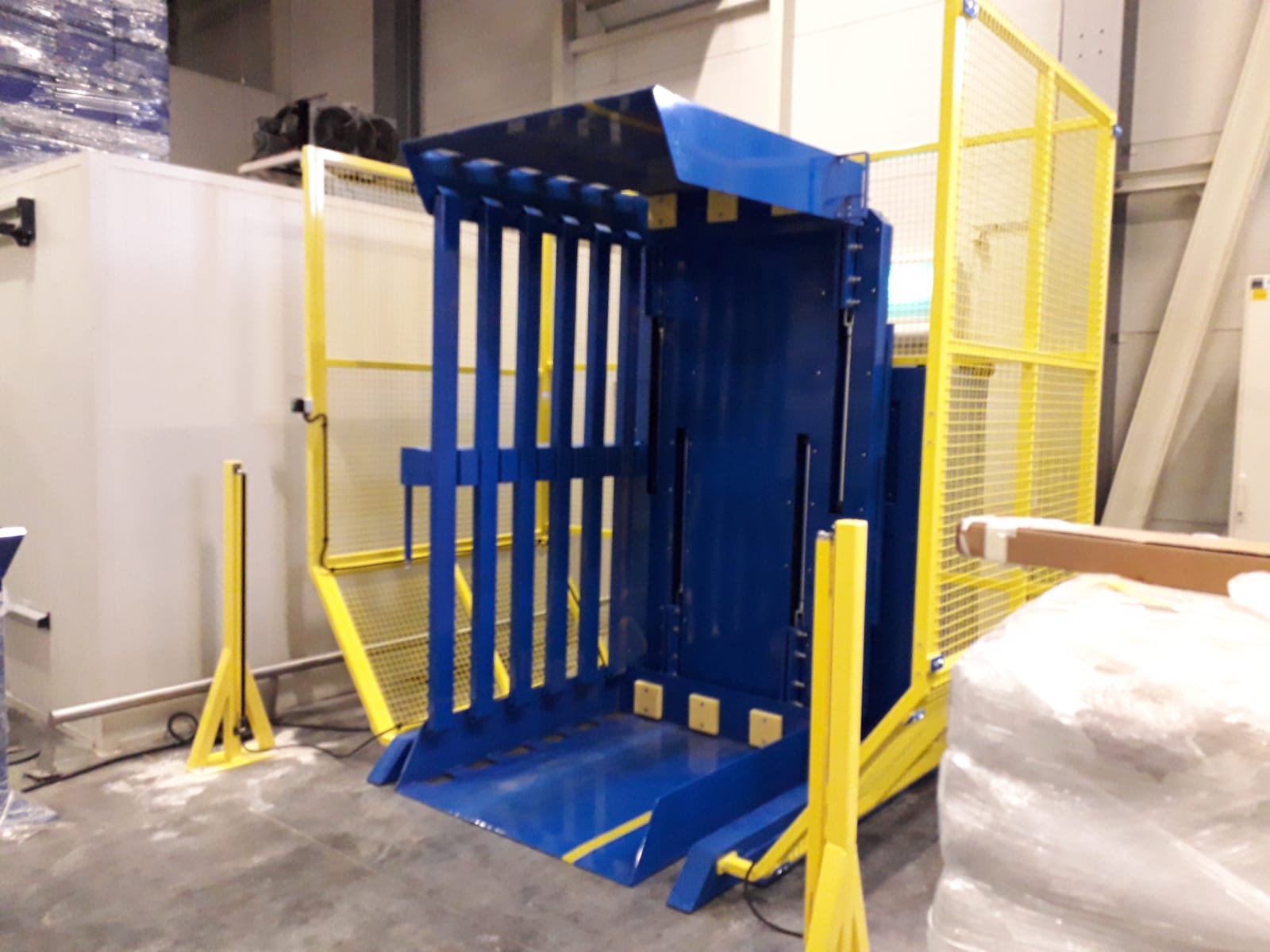
This might sound like a simple machine, but the engineering behind it is focused on one thing: protecting your assets. As an engineer who has spent his life designing and building packing and handling solutions, I appreciate the elegance of a machine that solves a complex problem so effectively. It’s not just about turning things upside down. It’s about doing it with precision and control. Let's dive deeper into how this technology works and why it’s become an essential tool not just for wineries, but for any business handling fragile or unstable goods.
How Does a Pallet Inverter Actually Secure Wine Crates During Rotation?
You see a machine designed to grip and flip a one-ton pallet of fragile glass bottles, and a natural question comes to mind: "How can I be sure it won't crush them?" The fear is understandable. Too much pressure, and you've traded breakage from dropping for breakage from crushing. Too little pressure, and the load could shift and tumble mid-rotation. This is where the machine’s design has to be perfect. A failure here isn't just a mechanical issue; it's a direct hit to your inventory and profits.
The machine secures wine crates by using two powerful, yet sensitive, clamping platforms. These platforms apply a consistent, evenly distributed pressure from the top and bottom of the load. The key is the hydraulic pressure control system. It allows the operator to set the precise clamping force needed for the specific load. This ensures the crates are held rigidly in place, becoming a single solid block with the machine, so they cannot shift or fall during the 180-degree rotation.
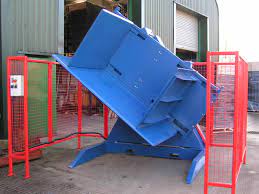
Let's break down the engineering that makes this possible. It's a combination of smart design in the clamping system, precise control over the power source, and a robust structure that doesn't flex or wobble under pressure.
The Clamping Mechanism Explained
The heart of the pallet inverter is its clamping system. These are not simple plates. They are large, flat platforms designed to distribute force over the entire top and bottom surface area of the pallet load. This is critical. By spreading the force, the pressure at any single point is very low. Think about the difference between pushing on a wall with your palm versus your fingertip. Your palm distributes the force, while your fingertip concentrates it. The clamping platforms act like giant palms, gently but firmly cradling the entire load. They are often coated with a high-friction material, like rubber, to provide extra grip without needing excessive pressure. This ensures that even smooth cardboard or plastic-wrapped crates don't slip.
Pressure Control and Adjustment
The force for clamping comes from a hydraulic system. But raw power is useless without control. Modern pallet inverters feature sophisticated pressure regulation valves. These allow an operator to dial in the exact pressure required for a given load. A pallet of heavy, robust goods might need a higher setting. A delicate load like wine crates requires a much lower, gentler setting.
Here’s a look at how you might adjust pressure for different products:
| Product Type | Load Characteristics | Recommended Pressure Setting | Key Consideration |
|---|---|---|---|
| Wine Crates | Fragile (glass), medium weight, stable stack | Low (e.g., 30-40 BAR) | Avoid bottle or cork damage. |
| Bagged Goods (Cement, Flour) | Unstable, heavy, can shift | Medium (e.g., 50-60 BAR) | Contain the bags to prevent sagging. |
| Boxed Electronics | Fragile (internal components), light | Very Low (e.g., 20-30 BAR) | Prevent crushing of boxes and contents. |
| Steel Parts in Bins | Very heavy, robust, stable | High (e.g., 70-90 BAR) | Must handle extreme weight securely. |
This level of control ensures the machine is versatile and can be trusted with a wide range of products, not just one type.
Structural Integrity for a Smooth Ride
Finally, the machine's frame and rotation mechanism are built for stability. The entire unit is constructed from heavy-gauge steel to prevent any twisting or flexing during the operation. The rotation itself is powered by a large motor and gearbox or a hydraulic rotator. It is designed to be slow and smooth, with controlled acceleration and deceleration. There are no sudden jerks or stops. This fluid motion is essential. It prevents the inertia of the load from causing internal shifts, which is another way bottles could knock against each other and break.
What Are the Operational Benefits Beyond Just Preventing Breakage?
It's easy to look at a pallet inverter and think it’s a one-trick pony. It flips pallets. But if you only focus on that single function, you miss the bigger picture. In my experience helping clients optimize their operations, I've learned that the most valuable investments are the ones that solve multiple problems at once. You might buy a machine to solve a breakage problem, but then you discover it also makes your warehouse faster, safer, and more efficient in ways you didn't expect.
Beyond preventing breakage, a pallet inverter delivers significant operational benefits. It dramatically increases the speed of pallet exchange for shipping or hygiene requirements. It reduces manual labor needs and the associated risk of worker injuries from heavy lifting. It also enables quick product recovery from damaged pallets and improves overall warehouse cleanliness and organization. These benefits combine to lower operational costs and boost overall productivity.
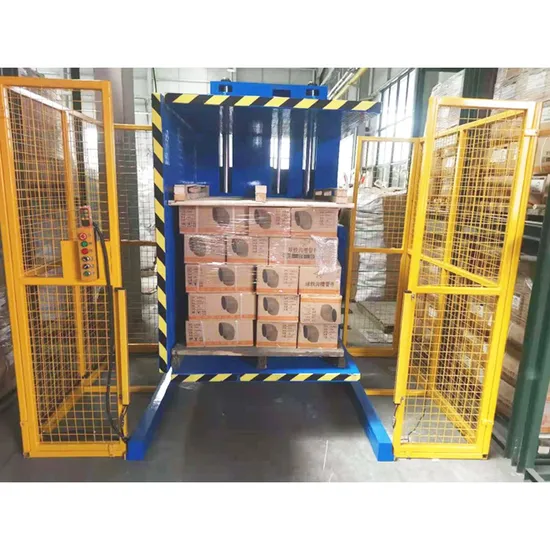
Let’s look at these benefits one by one, because this is where the true return on investment is found.
Streamlining Pallet Exchange and Workflow
How long does it take your team to manually unstack and restack a full pallet? It can be 15, 20, or even 30 minutes, depending on the load. And it requires at least one or two workers. A pallet inverter can complete the entire process in about 60 seconds with a single operator. Think about what that means over a full day or week. If you need to switch 50 pallets from wood to plastic for a cleanroom environment or for export, you're saving dozens of man-hours. This isn't just a labor cost saving; it's a massive boost to your throughput. The machine turns a major bottleneck into a minor, routine step.
Enhancing Worker Safety and Reducing Costs
Manual handling of heavy loads is a primary cause of workplace injuries, especially back injuries. These injuries are costly, not just in terms of medical expenses and insurance premiums, but also in lost productivity and morale. By automating the process of lifting and restacking, the pallet inverter removes the physical strain from your employees. This creates a safer work environment. A safer workplace has fewer accidents, lower insurance costs, and better employee retention. This is a benefit that pays dividends for years.
Improving Product Recovery and Quality Control
What happens when a forklift damages a pallet at the bottom of a stack? Without an inverter, your options are limited. You either risk moving the unstable load or you begin the slow process of manual restacking right there on the warehouse floor. With a pallet inverter, the solution is simple and clean. You can take the entire load, invert it, replace the broken pallet, and have the goods ready to move in minutes. This quick recovery minimizes disruption and, more importantly, reduces the chance of secondary product damage that often occurs during a messy manual restack. It also provides a perfect opportunity to inspect the load for any other damage that may have occurred.
This table shows a simplified ROI analysis:
| Cost/Benefit Area | Manual Method (Per Pallet) | With Pallet Inverter (Per Pallet) | Annual Impact (Assuming 20 Pallets/Day) |
|---|---|---|---|
| Labor Time | 20 minutes (1 worker) | 2 minutes (1 worker) | ~1400 hours saved |
| Product Damage Rate | 1% (estimated) | <0.1% | 90% reduction in loss |
| Injury Risk | Moderate | Very Low | Reduced insurance & lost-time costs |
| Throughput | 3 pallets/hour | 30 pallets/hour | 10x increase in pallet exchange capacity |
When you look at the numbers, it becomes clear that a pallet inverter is not an expense. It is a strategic investment in efficiency, safety, and quality.
How Do You Choose the Right Pallet Inverter for Fragile Goods?
Once you see the benefits, the next question is practical: "Which one do I need?" The market has many options, from simple, no-frills models to fully automated systems. Choosing the wrong machine can be a costly mistake. If it’s too small, it’s useless. If it's over-engineered for your needs, you've wasted capital. The problem is that a catalog won't tell you the whole story. You need to match the machine's capabilities to your specific operational reality.
To choose the right pallet inverter, you must first analyze your load specifications, including maximum weight, height, and footprint. Next, evaluate your operational needs, such as the loading method (forklift or ground-level), required speed, and available space. Finally, consider special requirements for your product, like the need for adjustable clamping pressure for fragile goods or stainless steel construction for food-grade environments. A thorough analysis of these factors will lead you to the most suitable and cost-effective model.
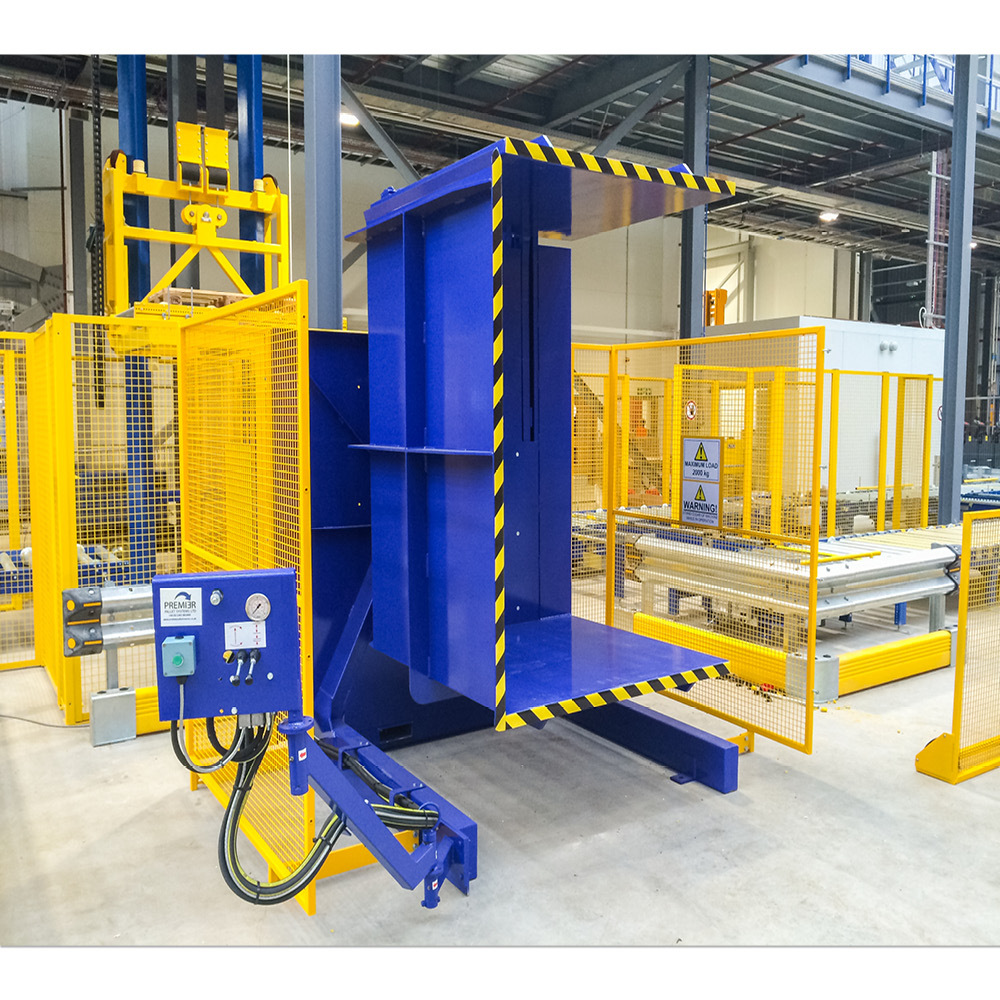
Making the right choice is a process of asking the right questions. As an engineer, I always start with the data. Let’s create a checklist to guide you through this process.
Step 1: Analyze Your Load
This is the most important step. Get the exact numbers for your heaviest, tallest, and widest pallets. Don't guess.
- Maximum Load Weight: What is the heaviest pallet you will ever need to invert? Choose a machine with a capacity at least 25% higher than this to ensure a good safety margin.
- Load Dimensions (L x W x H): What are the dimensions of your largest pallet load? The machine's opening, or "jaw," must be able to accommodate it.
- Load Stability: Are you handling neatly boxed goods, or something unstable like bags or pails? Unstable loads may require models with side-support walls for extra security during rotation. For wine crates, which are generally stable, a standard open design is often sufficient.
Step 2: Evaluate Your Workflow and Space
How will the machine fit into your current operations?
- Loading Method: Do you want to load the inverter with a forklift, or do you need a ground-level solution that can be loaded with a simple pallet jack? Forklift-loaded models are common, but ramp-loaded or floor-flush "pit" models are great for saving space and improving workflow if you don't always have a forklift available.
- Automation Level: Do you need a simple push-button operation, or a fully automated system that integrates with your conveyor lines? For most standalone applications, a simple semi-automatic model with joystick or button controls is perfect.
- Footprint: How much space do you have? Pallet inverters come in various configurations. Some have a smaller footprint but require more ceiling height. Map out the exact dimensions in your facility before you buy.
Step 3: Consider Special Features
| Feature | Description | Why It's Important for Fragile Goods |
|---|---|---|
| Adjustable Clamping Pressure | Allows the operator to set the hydraulic pressure. | Essential. Prevents crushing of delicate items like wine bottles or electronics. |
| Variable Speed Control | Controls the speed of rotation. | A slower, smoother rotation minimizes G-forces and internal load shifts. |
| Stainless Steel Construction | The machine is built with stainless steel. | Required for food, beverage, and pharmaceutical industries to meet hygiene standards. |
| Safety Guarding | Physical fences or light curtains that stop the machine if someone enters the area. | A critical safety feature for any automated machinery to protect your personnel. |
By systematically going through these points, you move from "what machine should I buy?" to "this is the exact machine that meets our requirements." It turns a guess into an engineering decision.
An Engineer's Perspective: From Fragile Bottles to Heavy-Duty Coils
You might be reading this and thinking, "This is interesting, but I run a steel mill, not a winery. We handle 10-ton coils, not cases of Chardonnay." It's a fair point. But I want to share a core insight from my decades in this industry: the fundamental engineering principles that protect fragile goods are the same ones that ensure the safe and efficient handling of heavy, high-value industrial products. The scale is different, but the problem is the same: how do you manipulate a massive, valuable object without damaging it?
The core principles of a pallet inverter—controlled pressure, stable rotation, and secure load handling—are directly applicable to heavy industries. The technology is scaled up and adapted to create machines like coil tilters and upenders. These machines use the same concepts to safely rotate massive steel or wire coils from a vertical to a horizontal orientation, preventing damage to the coil's edges and improving production line efficiency and safety.
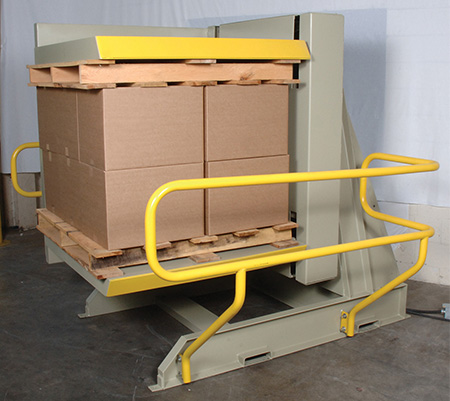
This is where my journey as an engineer and factory owner has given me a unique perspective. My company, SHJLPACK, is known for providing "TOTAL SOLUTION FOR WRAPPING MACHINE," and that includes the handling that happens before the wrapping.
The Universal Principle of Load Integrity
Years ago, I worked with a client in the steel wire industry. They produced large, heavy spools of high-tensile steel wire. Their problem was "telescoping." When they lifted the spools, the inner windings would sometimes sag and slip downwards, creating a cone shape. This damaged the wire and made the spool impossible to handle with their automated equipment. Their challenge was to turn the spools 90 degrees after production without this happening.
We designed a coil tilter for them. It didn't just tip the coil over. It used a V-shaped cradle to support the coil's structure and a gentle, powered rotating motion. It was fundamentally the same idea as a pallet inverter: support the load, control the movement, and maintain the product's integrity. We solved their telescoping problem, which saved them a significant amount of money in scrapped product and downtime. The same logic that prevents wine bottles from clinking together prevents steel wire from telescoping.
Adapting Technology for Heavy Industry
Of course, you can't use the same machine for a wine pallet and a steel coil. The technology must be adapted. This is what we specialize in.
| Handling Principle | Application for Wine Pallet (1000 kg) | Application for Steel Coil (10,000 kg) |
|---|---|---|
| Support & Clamping | Flat platforms with low-pressure hydraulics. | Heavy-duty reinforced steel cradles, high-capacity hydraulics. |
| Movement & Rotation | Smooth 180-degree rotation to swap pallets. | Smooth 90-degree tilting to change coil orientation for processing or shipping. |
| Control | Simple button or joystick with pressure gauge. | PLC-based controls integrated with factory MES, with load sensors. |
| Goal | Prevent breakage, swap pallet. | Prevent coil damage (telescoping, edge damage), orient for production. |
As you can see, the core challenge is identical. We are manipulating a valuable product to prepare it for the next step in the supply chain. For a CEO like Javier Morales, who is focused on efficiency, cost reduction, and smart technology investments, understanding this principle is key. The solutions that bring efficiency to one industry can be adapted to bring even greater returns in another. Investing in the right handling equipment is not just about preventing damage; it is a direct investment in your production capacity and bottom line.
Conclusion
A pallet inverter is a strategic tool for safe, efficient handling. It protects fragile and heavy loads, boosting productivity and your bottom line by reducing waste and labor.


